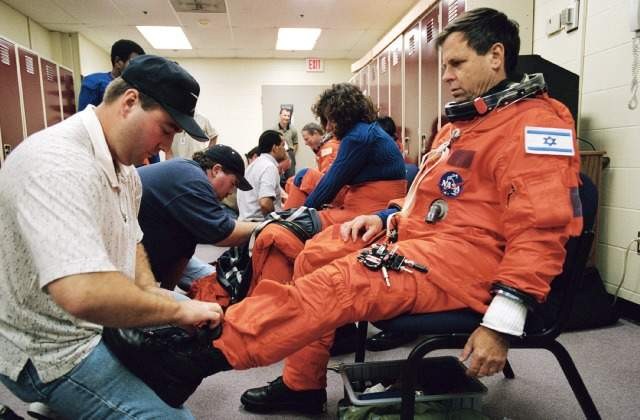This is how a book written by a senior CIA officer Brigadier General (Res.) Yoram Ilan Lipovsky, one of the founders of the Air Force's space program, reveals: A launcher during takeoff is a very vulnerable object, it is worth considering using this technology to attack Iranian launchers

The senior, Richard Irwin, who completed 28 years of service in the CIA unit KH601, writes that senior NASA officials shared their concerns with senior national security officials in the White House. As you may recall, the space shuttle Columbia took off without apparent problems, but exploded on its way to land over Texas on February 1, 2003, and all seven crew members perished, including Ilan Ramon, the first Israeli astronaut. Many senior officials at the space agency feared that Ramon's presence could make the shuttle a target for terrorism," Irwin writes in his book.
Reserve Colonel Yoram Ilan Lipovsky, who started the space program in the Air Force and is now the CEO of IAT, says that this is not an unfounded fear: "In general, the idea of intercepting launchers and missiles at the stage when they are accelerating is an excellent idea because at this stage the missile rises very slowly and Leaves a huge signature - a huge brown ball, and therefore you can easily hit this ball with a relatively simple missile. Of course, any missile you hit at the beginning of the journey will not reach the target area because it has not yet finished burning, for example Iranian missiles if they are intercepted at this stage they will crash inside Iran, this is a very strategic business, both the Americans and the Israelis are testing the idea known in the professional language as Boost- Phase Interception in depth."
"Such a missile could be launched either from the sea (ship or submarine), from the air or from the ground. I quite believe that it would have been very difficult to penetrate with such a missile into the areas inside the impact shell. Did they look into the possibility of intercepting an American launcher during the launch itself, I'm sure every professional knows that this is a doable thing and thought about it once. Both on the part of the potential attackers and on the part of the potential defenders. However, there is no doubt that this is a serious threat that cannot be ignored in the future."
Nine months before the launch, NASA Administrator Sean O'Keefe asked Tom Ridge - the Secretary of Homeland Security for assistance in securing the shuttle launch." Irwin wrote and added that as soon as the people at NASA started to worry, so did the CIA.
"There was no solid evidence of this, but information derived from the American security agencies' threat matrix analysis indicated that the first Israeli astronaut aboard a shuttle could be a good target for Al Qaeda," said Irwin.
In addition to the usual security arrangements, the Department of Defense provided air cover for the Kennedy Space Center, the Coast Guard added its own patrols in the waters surrounding Cape Canaveral, and US Customs promised to place armed helicopters in the air to patrol the skies over the Cape." added
KH601 was Irwin's tag number also describes the CIA officer's exploits in the XNUMXs in Central America and two decades later in Afghanistan where he led one of the first CIA teams to fight al Qaeda.
Irwin does not address the question of whether the malfunction that caused the disaster was intentional. We therefore asked Ilan-Lipovsky: "I think that in our crazy world you can never say that there is no probability that this happened, but it is a probability of maybe one in a billion, knowing how to sabotage the shuttle's sheath in such a way that what happened happened, you have to be very sophisticated because we saw how it happened , and to say that someone in advance sabotaged the production and knew that things would develop in this way is something that is beyond imagination, the probability that they were involved in the attack is zero."
